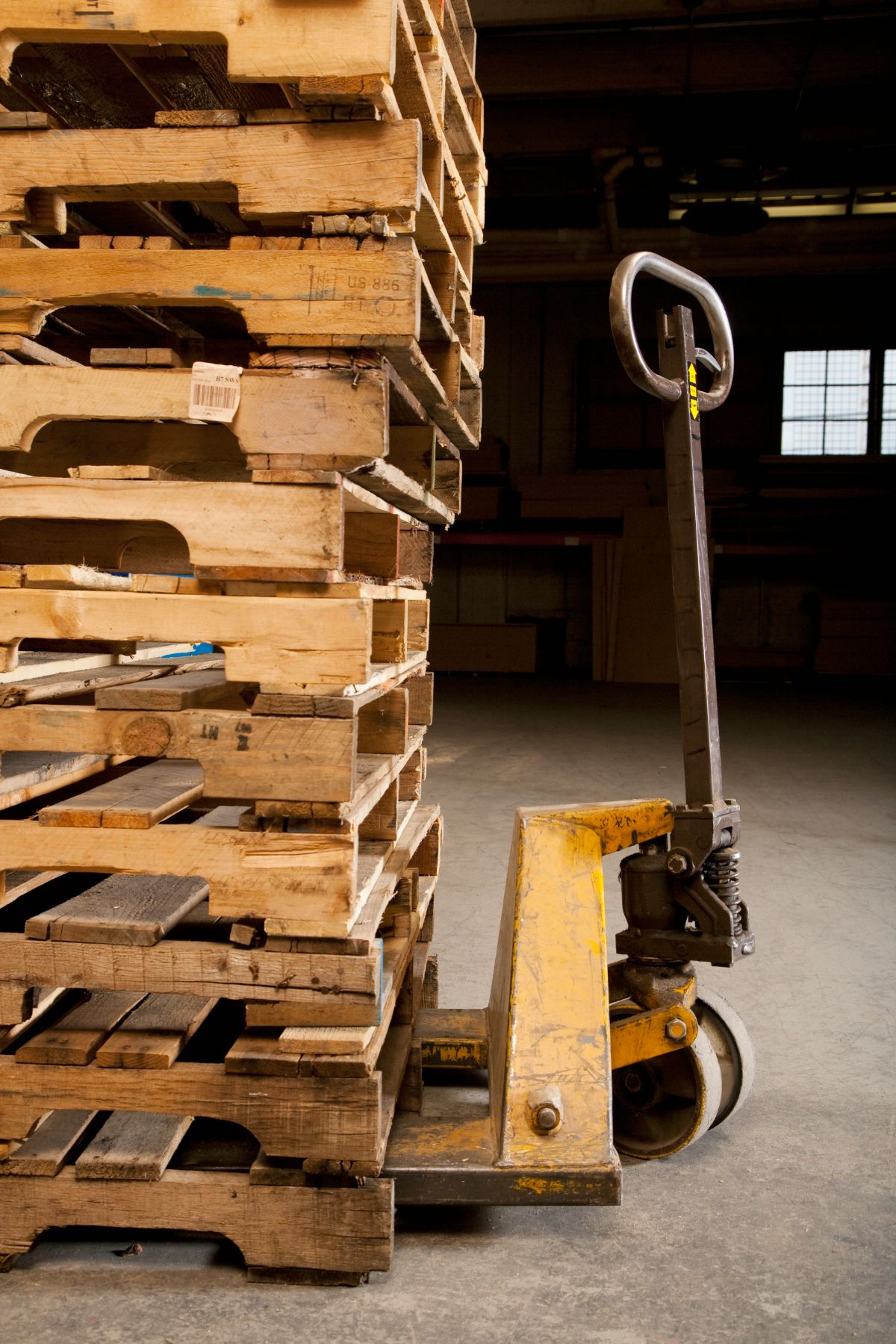Between Grade A and Grade B pallets and terms like “GMA,” it’s easy to get lost in the jargon of pallet types.
Whether you’re a seasoned logistics manager or new to the warehouse world, understanding your zillions of pallets options well can help you find the right fit for your supply chain needs.
Let’s break down what sets pallet grades apart, what “GMA” really means, and how choosing the right pallet type might make a surprising difference in efficiency (and your bottom line).
Key Takeaways
- Grade A pallets are usually top-tier in quality—cleaner, newer, and often used for more sensitive shipments where durability is key. Grade B pallets, while functional, often show signs of wear or minor repairs or flaws, making them a more budget-friendly choice for less delicate shipments.
- GMA (Grocery Manufacturers Association) pallets are standardized 48×40-inch pallets widely used across the United States. Their consistent size and structure make them reliable in a variety of industries, especially for applications involving heavy loads or multiple reuses.
- Heat treated pallets have been treated with heat to eliminate pests, making them safe and compliant for international shipping. Stringer pallets have boards running lengthwise along the sides to provide a stable base but requiring a forklift to lift them from the side (not just a pallet jack). Block pallets are made with sturdy blocks between the top and bottom boards to offer four-way entry from any side.
When choosing between Grade A and Grade B pallets, it’s all about balancing cost with quality or your re-usability needs.
Grade A pallets, sometimes called “#1” or “premium” pallets, are typically in top condition—clean, sturdy, and free of repairs (eat least when new), making them ideal for shipments requiring a professional appearance or added durability.
Grade B pallets, also known as “#2” or “utility” pallets, offer a more budget-friendly alternative. While they’re often associated with used or lightly repaired pallets, they can be built new at a lower cost. These Grade B options may have minor blemishes, bark visible on the wood, or structural repairs but are just as functional, making them a smart choice for shipments where cost efficiency matters more than anything else.
We build both types new: Grade A are made with kiln-dried wood for durability, while Grade B are made with green, undried wood.
Both work well, but Grade A is always recommended for food-grade transportation.
What Does GMA Stand For With GMA Pallets, And What Are They?
GMA stands for the Grocery Manufacturers Association, which established the standards for one of the most widely used pallet types in North America.
GMA pallets are built to a consistent 48-inch x 40-inch size and are typically crafted from wood, though they can be made from form-molded plastic.
This uniformity means they move seamlessly through a variety of supply chains, from warehouses to retail floors. Thanks to their robust design, GMA pallets can generally withstand multiple uses, making them a versatile and cost-effective choice for businesses across sectors, particularly if you might use them more than once!
What’s a Stringer Pallet Versus a Block Pallet?
Stringer pallets and block pallets differ in their design, which affects how they’re handled and their overall durability.
Stringer pallets use long wooden boards, or “stringers,” that run along the length of the pallet to support the top deck, creating a sturdy frame that forklifts can lift from either end but typically only two-way entry. Stringer pallets are usually lighter and less costly than block pallets.
Block pallets are built with solid wooden blocks (4 inches thick) placed at each corner and midway along each side, giving them a stronger, more stable construction with a true four-way entry—meaning forklifts and pallet jacks can lift them from any side. This four-way access makes block pallets really versatile and durable, especially in high-traffic or heavy-duty settings where you need easy maneuverability.
How Are Heat Treated Pallets Made?
Heat-treated pallets go through a process designed to eliminate insects, pests, and fungi, making them safe for international shipping where contamination might be a problem.
As you might expect from the name, the process involves placing the pallets in a large kiln where they’re heated to an internal temperature of at least 132.8°F (56°C) for a minimum of 30 minutes. The heat penetrates the wood, eradicating pests or larvae without the use of chemicals.
Once treated, these pallets are stamped with a unique “HT” (heat-treated) mark, certifying they meet international standards required by ISPM-15, the regulation for wood packaging in global trade.
What is ISPM-15?
ISPM-15, or International Standards for Phytosanitary Measures No. 15, is a global regulation established by the International Plant Protection Convention (IPPC) to prevent the spread of invasive pests and diseases through wood packaging materials in international shipping. This standard requires that all wood packaging, including pallets, crates, and dunnage, be treated—typically through heat treatment or fumigation—to eliminate pests that could otherwise be transported over oceans.
ISPM-15 exempt pallets are made with no wood, just plastic, meaning pes infestation is usually a non-issue.
Looking For a Reliable Pallet Company In Illinois? That’s Us.
When you need sturdy, dependable pallets to keep your operations running smoothly, look no further than Accu Pallet. Our Illinois pallet distribution team specializes in quality pallets—including Grade A, Grade B, or custom options—all made to fit your budget.
With a commitment to fast turnaround times and great, hands-on customer service, we’re here to be your go-to partner for pallets you can count on, every time. Give us a call to learn more and get pallet pricing today!

